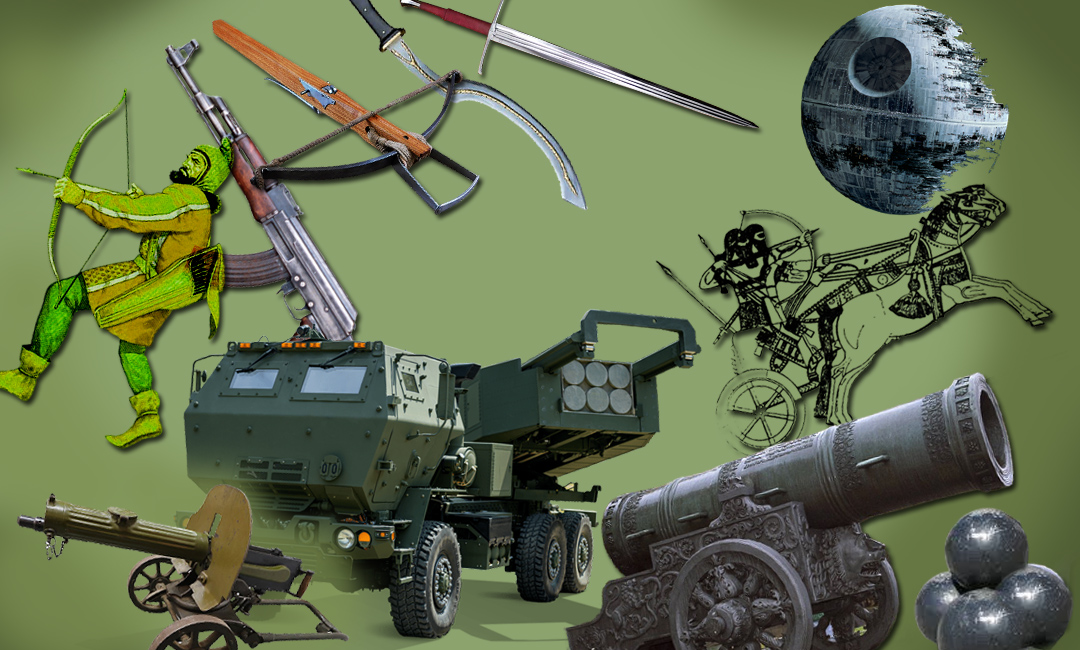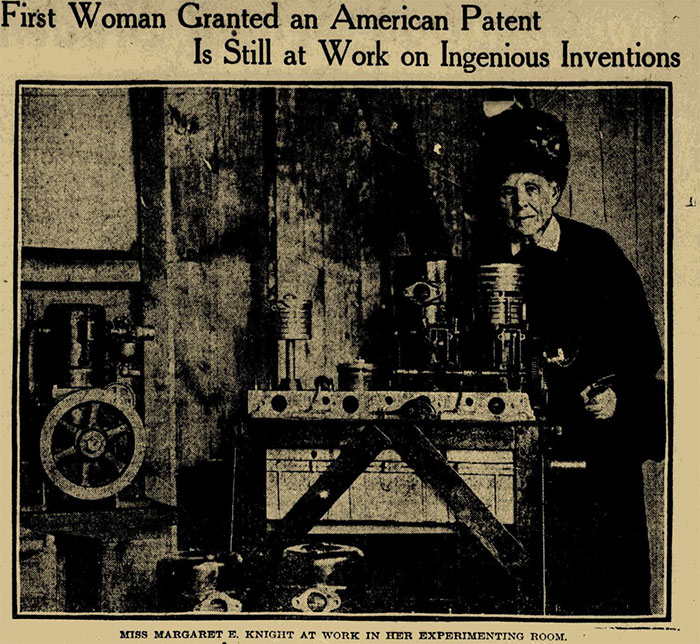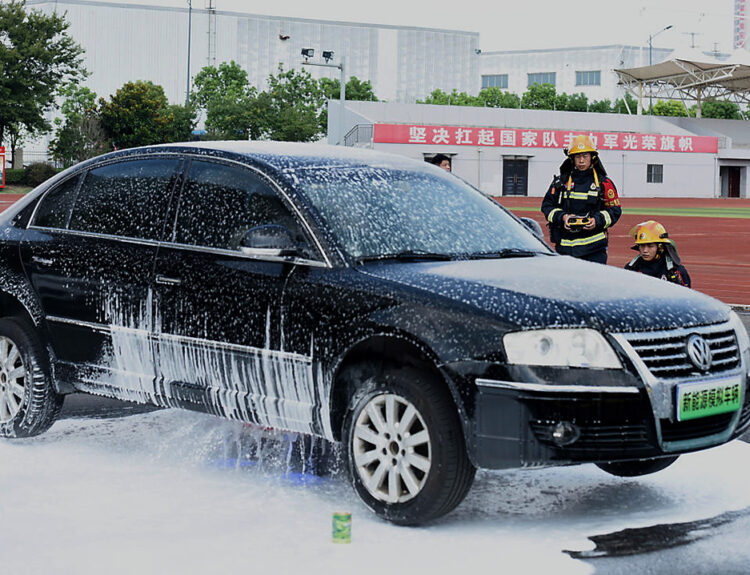Throughout its existence, humanity has sought to discover the formula for a stable “eternal” peace – and in doing so, has invented ever newer and deadlier weapons. It has also sought out reasons and ways to use them. The entire history of civilisation and technological progress in this regard appears as an eternal contest between shield and spear. Some invent previously unseen weapons, while others devise means of defence against them. And so the cycle continues.
Relatively short periods of “eternal” peace have allowed civil society time to enjoy the fruits of the defence industry repurposed for peaceful use. It must be acknowledged that practically all modern gadgets, communication tools, social networks, and other benefits of civilisation were created and developed for military needs and only after years or decades were engineers able to adapt them for everyday civilian purposes.
The hot phase of the Russo-Ukrainian war, which began in 2022, once again turned everything upside down, blowing the dust off devices created for entertainment, such as civilian drones. Next came Starlink, unmanned boats, and other technologies that, in peacetime, seemed to have no military function.
However, the issue of victory or defeat on the battlefield, as in previous World Wars, hinged on the search for Wunderwaffe – the “ultimate weapon,” capable of changing the rules of the game and turning the tide. The search for an absolute, in this case, the dream of creating such a weapon, is one of the inherent traits of human psychology, alongside the search for the “philosopher’s stone” or the “elixir of immortality.”
“Eternal Peace” or “Endless War”
In the golden collection of American science fiction, there are two short stories that provide exhaustive answers to the question of what an ultimate weapon is and whether it can end wars (or civilisation).
The first story is The Last Weapon by the brilliant and ironic Robert Sheckley. The action takes place on a deserted Mars, where three smuggler-looters rummage through a military depot of the extinct Martian civilisation. The protagonists find a mass of different super-weapons, from impenetrable force fields and ultra-powerful laser cannons to an army of synthetics controlled telepathically. However, this is not enough for them, so upon finding a small box labelled “Ultimate Weapon,” they open it – and release a creature indifferent to any walls, shots, or explosions. The only thing it was created for is to devour protoplasm. It was this creature that ended the last Martian war, leaving neither victors nor vanquished.
The second story is The Final Battle by science fiction writer Harry Harrison (The Stainless Steel Rat, Deathworld). In it, a father tells his children around an evening campfire about the last war in human history and what helped them win it: “Our enemy could have invented the Ultimate Weapon before us, and we would have been wiped from the face of the Earth, don’t forget that. A historical fluke saved our culture and brought death to our enemies. And if luck taught us anything, it’s humanity. We are not gods and far from perfect – and we must ban war, putting an end once and for all to human hostility.” After this tirade, the father shows his quiet children the “ultimate weapon” – a bow and arrows – and adds at the end: “Now war seems something incredible. The era of eternal peace has come.”
Many inventors believed the same, creating yet another game-changer, after which wars allegedly lost all meaning. The latest iteration of the “bow and arrows” is nuclear weapons, the possession of which, as it turns out, is not a guarantee of peaceful coexistence. On the contrary – as in the case of Russia – they have become a mechanism for nuclear blackmail and a threat to the entire civilised world.
Shield and Spear
In the beginning, there was the wheel
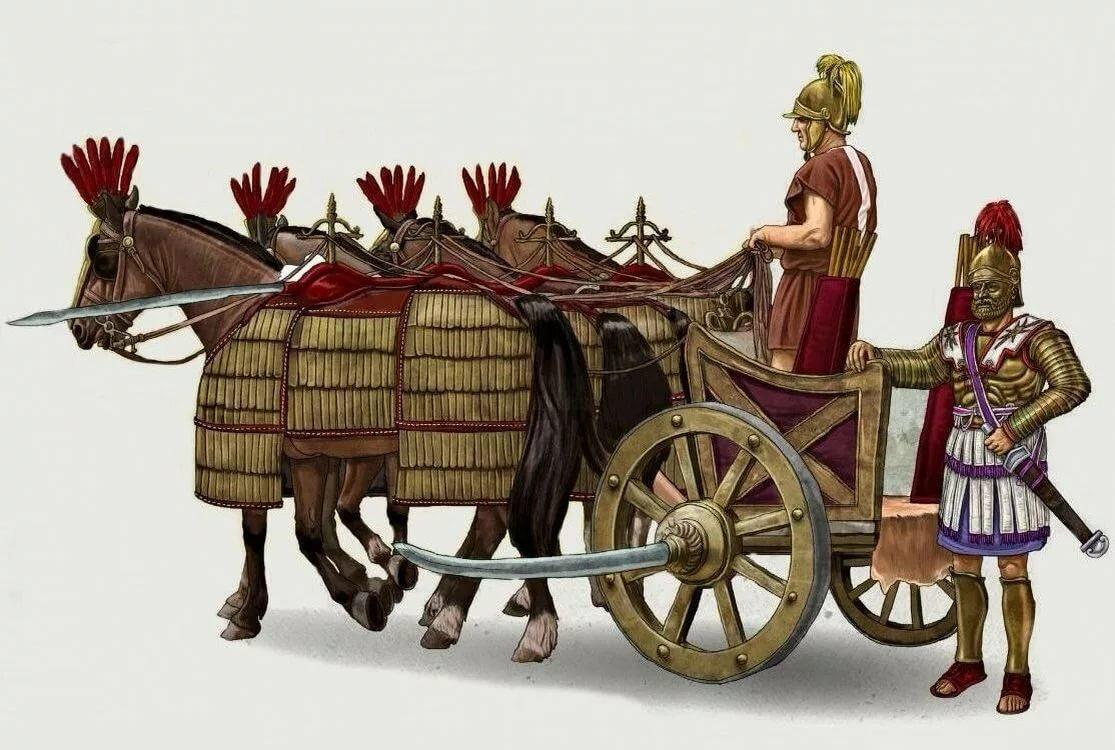
The protagonist of Harry Harrison’s story was wrong – the bow, capable of striking from a distance, did not become a deterrent weapon. On the contrary, in the Neolithic era, early hunters began using bows not only for hunting large game but also against their own kind. It should also be understood that even with the most modern weapons, there is no universal recipe for victory; there is only a combination of factors, including time and place. The Russo-Ukrainian war has repeatedly demonstrated that a column of Russian occupying armoured tanks advancing to break through the Ukrainian Armed Forces’ defensive line can easily be destroyed by dozens of cheap UAVs, and sinking a third of the Russian Black Sea Fleet does not necessarily require having one’s own fleet.
However, weapons that change the rules of battle have indeed appeared periodically throughout human history, and the first truly military superweapon that influenced the course of wars was the wheel. According to archaeological data, the first chariots appeared in the Middle East around 4000 BCE, just when humanity began to widely use wheeled transport. During the same period, horses were domesticated, and the coincidence of these two factors led to the emergence of the chariot and a change in military tactics. Thanks to these early prototypes of future tanks, the Palestinian Hyksos tribes managed to expel the Egyptians from most of the Nile Delta, and it was only a century later that the Egyptians were able to fully master the new combat technique. Thanks to war chariots, Egypt remained a leading power in the Mediterranean for a long time, until it encountered opposition in the form of the Greek phalanx. Greek tactics quickly proved that chariots were no longer effective on the battlefield, and the advantage shifted to light cavalry.
Besieged Fortress
Fortification walls and moats, fortified towers, and castles were used to defend against external threats as far back as 8000 BCE and served humanity until the Middle Ages. The assault and siege of fortresses was always the most challenging stage for the attacking side, as it was associated with significant losses in manpower. However, in the first millennium BCE, the siege tower was invented – a massive wooden structure on wheels, which not only protected attacking soldiers but also allowed them to reach fortress walls and penetrate the besieged stronghold using a drawbridge.
Of course, Odysseus’s Trojan Horse was a more reliable and cunning solution to taking a city, but as practice shows, such tricks can only be pulled off once. The decline of the siege tower era began with the advent of medieval artillery, which could demolish any of the enemy’s fortifications even before the siege began.
The Bow for the Poor
Mastering the art of archery requires years of training and good physical preparation. English archers, for example, were trained for this difficult task from childhood, including physical exercises and learning the intricacies of accurate shooting. However, crossbows, invented in the 4th–5th centuries, did not require any special preparation. It was enough to learn how to use the simple mechanism for stringing the bow and have two eyes to aim at the target. As a result, a hereditary knight who had spent his entire life in battles and tournaments could be killed from behind a bush by an ordinary peasant armed with a crossbow. For instance, Richard the Lionheart was killed by a crossbow bolt to the neck. At certain points, the presence of a squad of crossbowmen could significantly increase the effectiveness of an army.
The “Powder of War”
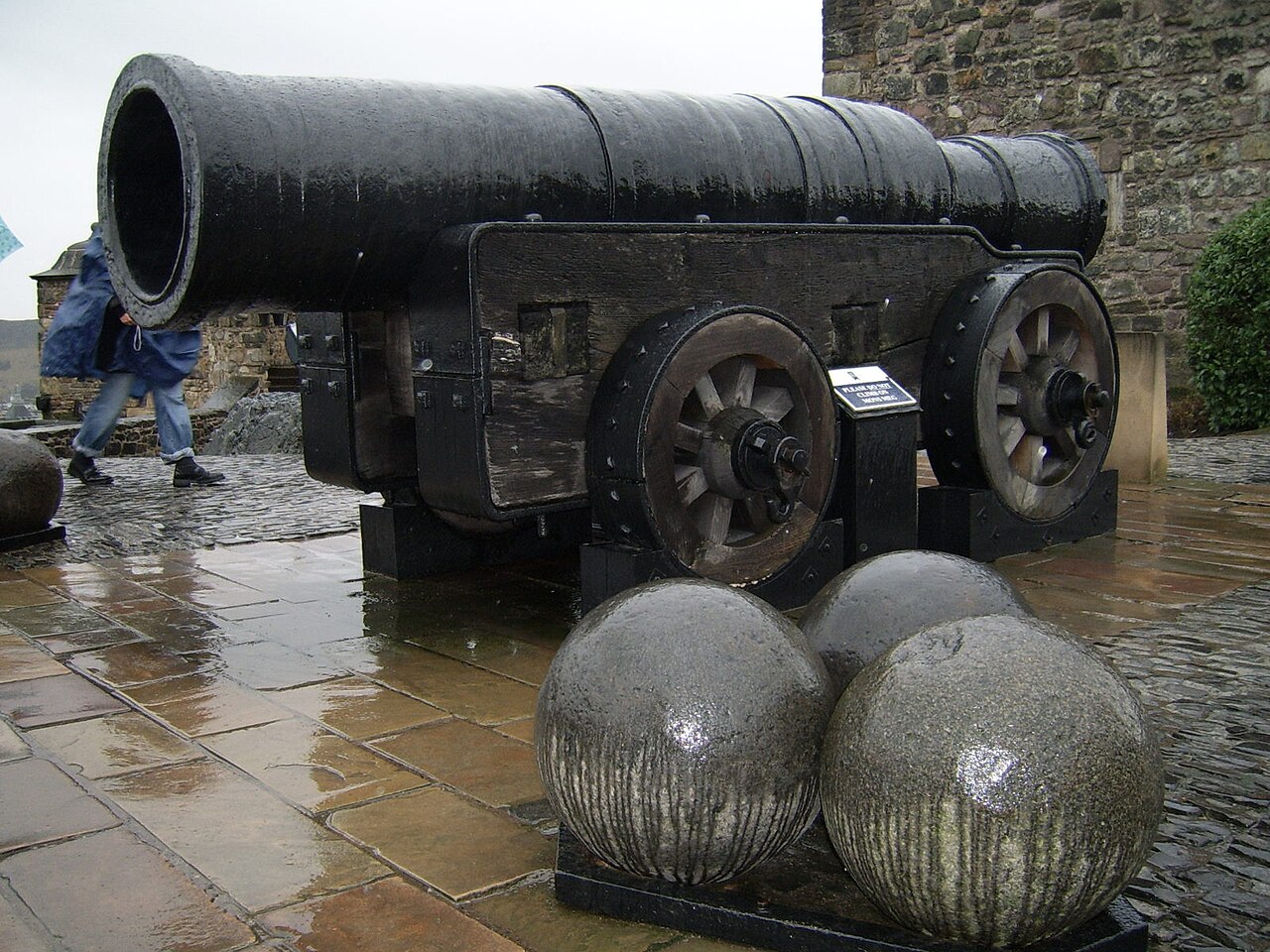
It is unknown how military affairs would have evolved if the Chinese had not invented gunpowder. By the middle of the 1st century AD, a mixture of saltpeter and sulfur was already being used in China for preparing medicinal potions. Fireworks and pharmaceuticals, however, were soon overshadowed by another use of this explosive mixture – the first examples of a new generation of weapons began to appear: primitive bombs, grenades, and even rockets (wooden ones, of course). But full-fledged firearms emerged only in the 13th century – a wooden cannon that used gunpowder and a round stone. In Europe, the mass use of firearms began in the 14th century, and from then on, it was a never-ending process of improvement. By the end of the century, European armies already had their own firepower, including various types of cannons, from huge ones to small hand-held ones. Initially, stone balls were used for shooting, but the development of metallurgy later contributed to the power and penetration of the new generation of lead balls. The further evolution of cannons was associated with making them lighter, more mobile, and faster-firing. However, the era of lightweight, simple rapid-fire weapons of mass destruction was still far off.
The Great Equalizer
There is a famous saying:
“God created men strong and weak. Samuel Colt made them equal.”
Indeed, it is hard to overestimate the significance of personal firearms, which equalise the chances of two physically unequal people. Firearms evolved into handheld weapons by the end of the 14th century. As with cannons, the first examples of rifles and pistols had no standard construction and were made from various materials. Mass production was still a long way off. But the general principle of all these early “shooters” was the same – a metal tube with one closed end, mounted on a handle. Lead or iron balls were used as bullets, with a short range of about 150 metres and poor accuracy. Only a century later, with the appearance of the arquebus, did the technology improve. The arquebus already had a kind of trigger mechanism, and its range reached 250 metres. In any case, light firearms began to change the very tactics of combat. Whereas earlier, chaotic shooting during hand-to-hand combat might not have influenced the outcome of the battle, the use of a single, massive volley of thousands of firearms could immediately decide the battle’s outcome, no matter the opponent’s advantages. The further evolution of personal firearms continues to this day, now taking into account advanced technologies, including laser optics and shot adjustment using artificial intelligence.
The Butcher
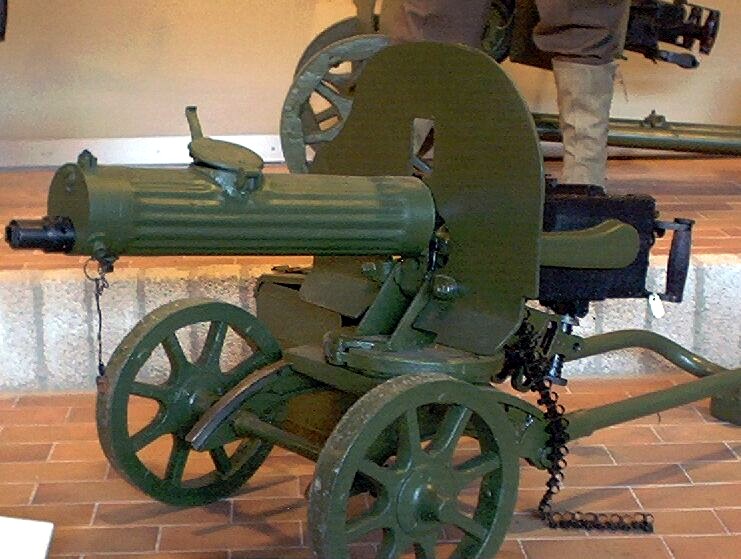
Despite the presence of cannons, muskets, pistols, and arquebuses, cavalry continued to be widely used in wars. Only at the end of the 19th century was a weapon created that ended the use of cavalry on the battlefield – the automatic Maxim gun.
American Hiram Stevens Maxim developed his invention, which was later dubbed “the butcher” and “the hellish reaper,” over about 10 years. At first, his invention was not appreciated due to its high consumption of ammunition. Later, banker Nathaniel Rothschild helped promote the machine gun, leading many armies around the world to purchase Maxim guns… for prestige, as it didn’t fit into any existing battle strategies. The British first demonstrated its effectiveness in 1893 in Africa, when, with the help of five machine guns and 700 men, they defeated a 100,000-strong native army in four months, losing only a few dozen soldiers. All subsequent battles only confirmed the effectiveness of the “hellish reaper” against any number of infantry not equipped with machine guns.
The Maxim gun fundamentally changed 20th-century warfare – machine guns and artillery proved to be highly effective means of defence, against which none of the warring sides had an adequate response. This led not only to the development of armoured vehicles, chemical weapons, and combat aviation but also forced all the armies of the world to abandon colourful uniforms in favour of camouflage. It was only World War II, with its lightweight, automatic personal firearms, that managed to push machine guns into the background.
The Atomic Bomb and Information Warfare
The invention of the atomic bomb put a temporary end to the age-old struggle between shield and spear. Wernher von Braun, Robert Oppenheimer – the names of these people are inextricably linked to what is now called the “nuclear club.” The atomic bomb, as a weapon of mass destruction, has so far become a deterrent weapon, and perhaps the world has not yet gone mad enough to use it in the next military conflict. Although, over the past decade, the Russian Federation, led by dictator Putin, has steadily increased its nuclear blackmail, threatening not only non-nuclear Ukraine, which it treacherously attacked, but also its allies. So far, our civilisation has managed to avoid a global military conflict, but the significance of so-called “hybrid wars” is growing, using proxy armies, as well as information and economic wars aimed at undermining a state’s defence capabilities and sowing division within society.
Ukrainian Game Changers
When devising his insane plans to invade and occupy Ukraine, Putin did not anticipate the fierce resistance of Ukrainian society or the active (though limited) support from Western allies. Among the Ukrainian game changers who turned the tide of the war, the following weapons stand out:
The “Partisan’s Weapon” – the ambitious plans of the bunker dictator to “take Kyiv in three days” were shattered by the harsh reality of the Javelins. Russian armoured columns were annihilated by Ukrainian defenders’ anti-tank missiles from well-protected positions, transforming the supposed blitzkrieg into a bloody, fiery meat grinder for the initial waves of occupiers.
Next came the HIMARS systems – trucks equipped with launch containers moving along the front lines, destroying Russian military depots and logistics before quickly retreating to safety. Blown-up bridges, depots, and roads significantly hampered the invaders’ advance into Ukrainian territory.
In the early stages of the war, the Turkish Bayraktar TB2 drone also made its mark, becoming one of the most famous UAVs globally due to its use by the Ukrainian Armed Forces against the occupiers. Later, Bayraktar was replaced by the mass development of Ukrainian engineering, with Ukrainian copters and drones now hunting Russian occupiers day and night along the entire front line.
Finally, the Patriot missile defence system became the shield that protected peaceful Ukrainian cities from bombs, missiles, and “Shaheds” sent daily by the Russians to destroy civilian infrastructure and terrorise the population.
What comes next? This question was recently addressed by former Commander-in-Chief of the Armed Forces of Ukraine, General Valerii Zaluzhnyi.
“Si vis pacem, para bellum”

Source: Wikipedia
Speaking at the RUSI Land Warfare Conference 2024, the former commander Valerii Zaluzhnyi shared his vision of the future course of the Russo-Ukrainian war and the lessons the free world should draw from Ukraine’s tragic experience:
“Undoubtedly, history is once again giving the Ukrainian people a chance. On the cold night of 24 February 2022, while the world enjoyed peace and slept in warm beds, Ukrainians reminded themselves whose blood runs in their veins and engaged in a fierce battle with their eternal enemy. At the cost of the lives of ordinary Ukrainians, we won a chance for ourselves—a chance not just to continue our eternal struggle, but to win. It cost us dearly—the lives of many of our best sons and daughters. That was only the starting point. We quickly realised that surviving the blow and repelling the enemy was only the beginning of a more complex phase of the struggle, which consists of finding our unique path to victory. It is this search that led us to understand the visible contours of revolutionary changes, primarily in military affairs. Strangely enough, but logically, these changes, invented on the battlefields of the Russo-Ukrainian war, are likely to shape the nature of warfare in the 21st century. And, most importantly, they will form the foundation of the future global security system.
Not long ago, it was safe to say that unmanned systems were the main cause of changes in strategies, forms, and methods of warfare. But today, it is necessary to introduce a broader concept into the new strategy of warfare—technology.
Technology is not only about innovative solutions but also a comprehensive set of measures including development, scientific support, training, and the development of doctrines that will change the situation on the battlefield, given the enemy’s existing superiority in military potential and resources. Simply put, today, we have already discovered a way to fight and defeat stronger armies in the 21st century. Clearly, technology is key to ensuring the resilience of the Ukrainian nation.
At the same time, I absolutely agree that the Russo-Ukrainian war is not yet the war of the future. It is merely a war of a transitional period. However, it is our war that is shaping new rules. We, Ukrainians, with our blood and desire for victory, are forming new patterns of warfare—a warfare that will become the war of the future.
In fact, a new stage in the forms and methods of warfare has begun. We see how scientific and technological progress has set the wheels of history in motion, bringing technologies to the battlefield that are likely to be decisive in this war and, most importantly, will become the cornerstone of future global security. It will depend on us whether these technologies are quickly mastered by the democratic world or by the world of tyranny.
It’s hard to predict how things will develop in the future. One thing is certain—tyrants will always need war as a tool to maintain their grip on power. The rest of us must build a reliable defence against them.
Today, more than ever, it is in Ukraine that survival techniques and technologies are being developed. But for obvious reasons, they cannot be scaled. On the other hand, our partners have resources but lack the practical field for testing them. Only together can we effectively use this resource, as time is no longer on our side.”
The Ultimate Weapon
Summarising the history of our civilisation through the prism of wars and the evolution of weapons of destruction, I would like to end on a hopeful note. Yes, without a doubt, tyrants and dictators will continue to destabilise the democratic world, creating pockets of tension and hotspots wherever their bloody hands can reach. However, even in the genocidal war waged by dictator Putin against Ukraine, the following is clear: despite numerical superiority, vast amounts of military equipment and weaponry, hundreds of thousands of missiles and millions of shells, support from Axis of Evil countries (Belarus, Iran, North Korea, China), and Russia’s vast nuclear arsenal, which has devolved into fascism, the ultimate weapon lies in the hands of Ukrainian warriors.
This weapon is courage, patriotism, and the conviction of a person who, with a weapon in hand, stands to defend their home and family from the crazed and soulless occupying hordes of the Russian dictator.
And this weapon cannot be forged if you have chosen the side of evil.
Source: The Gaze


